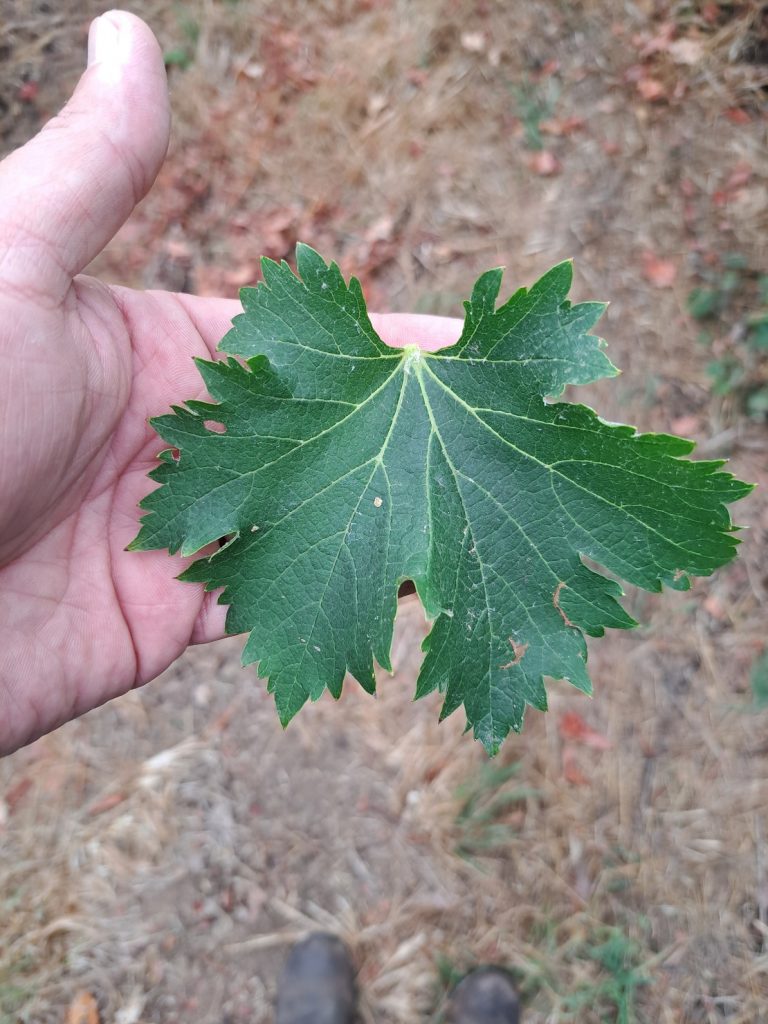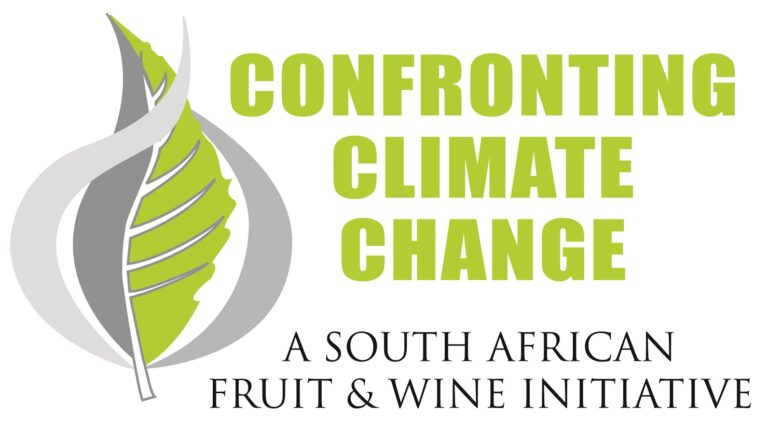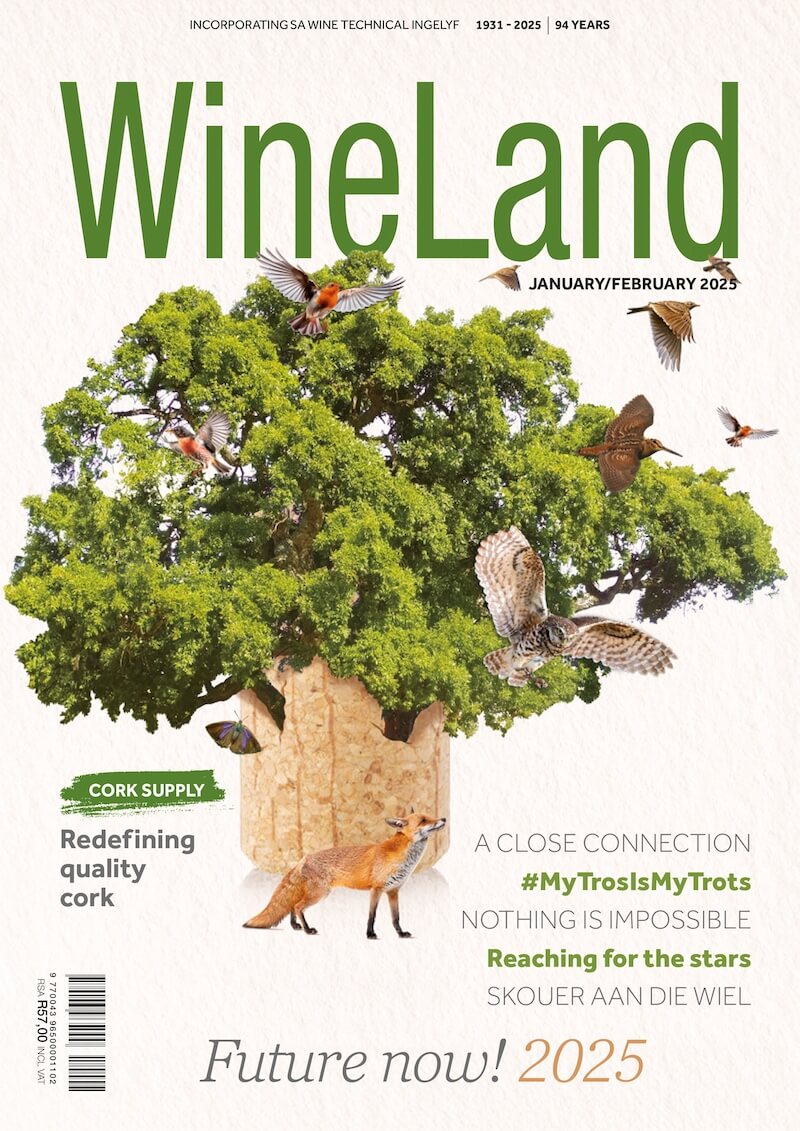Introduction
Fanleaf virus in vineyards refers to a group of viruses characterised by their distinctive symptoms such as fanleaf formation, yellow mosaic and vein banding. As a plant pathogenic virus belonging to the Secoviridae family, all species from the genus Vitis, including Vitis vinifera, Vitis rupestris and various hybrids, are regarded as hosts. The virus occurs worldwide in all wine-producing countries where the nematode Xiphinema index serves as the primary vector for the virus. It is considered one of the damaging grapevine viruses and has a notable impact on the lifespan, yield and fruit quality of the vine. Consequently, the fanleaf virus has a major economic impact on the wine industry.
Symptoms
The fanleaf virus typically causes deformed leaves with a characteristic fan-like shape and prominent, sharp-toothed margins (Photo 1). Chlorotic spots, like yellow mosaic patterns or yellow colouration of the veins, often occur (Photos 2 and 3). Infected vines often exhibit reduced vigour. Other common symptoms include millerandage (incomplete/hens-and-chicks fruit set), smaller and/or fewer grape bunches, which can lead to significant crop losses – in some cultivars up to 80% (Photos 4 and 5).
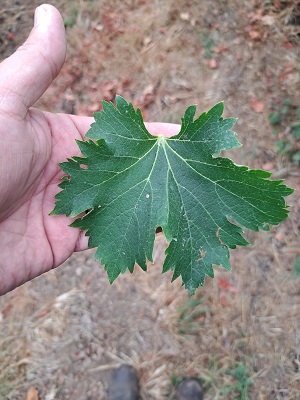
Deformed leaf with a fan-like appearance and prominent toothed margins – characteristic of infected vines.
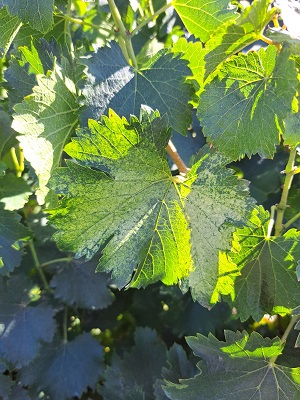
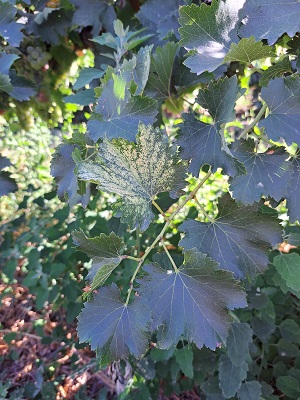
Chlorotic spots on leaves – typical of the fanleaf virus group.
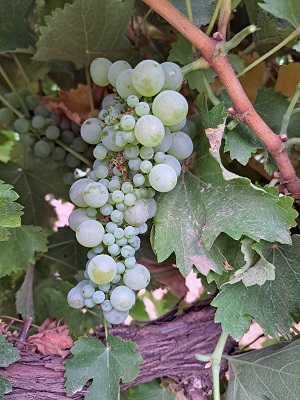
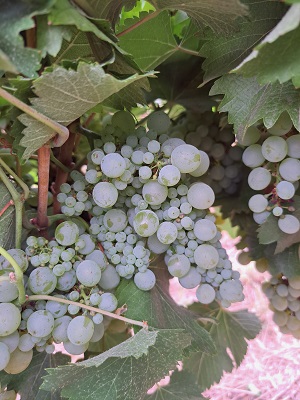
Millerandage of bunches on infected vines.
Transmission of the virus
The primary vector is the dagger nematode, Xiphinema index, which transmits the virus from one plant to another. Given the possibility of nematode transmission with contaminated irrigation water, it poses a particular danger to intensively irrigated vineyards near contaminated vineyards. Although mechanical transmission via, for example, pruning shears is possible, the probability is low. Worldwide, the virus is mainly spread through the propagation and replanting of infected plant material. In South Africa, the fanleaf virus is mainly found where the Hex and Breede Rivers meet, as well as in all the wine grape cultivation areas downstream from this point. This includes areas like Robertson and Montagu. Additionally, the fanleaf virus also occurs in the Olifants and Orange River regions, although it is limited to small areas.
Xiphinema index can survive in a wide range of soil types, but prefers light- to medium-textured soils like sandy loam and loam soils. Xiphinema index is well adapted to well-drained soils and is not often found in high numbers in heavy clay soils with periodic wetness. Soils with a high lime content can also create favourable conditions for Xiphinema index. The lighter, well-drained soils enable greater mobility for the nematodes, which can then move between hosts with ease and spread the virus quickly. This, coupled with a higher concentration of oxygen in these soils, leads to more rapid proliferation of Xiphinema index in comparison with wetter and heavier (higher clay content) soil conditions.
Sensitivity of cultivars and rootstocks
A wide range of cultivars is susceptible to infection with the fanleaf virus. Some cultivars do become infected but show minimal symptoms and are therefore considered more tolerant. To date, no Vitis vinifera cultivars exist that offer resistance to the virus, although there are varying levels of tolerance.
TABLE 1. Cultivar sensitivity to fanleaf virus.

Certain rootstocks show suppression of the virus and can present possible benefits for the management of fanleaf virus: RS3 (Ramsey crossed with Schwarzmann), UCD-GRN 1, Nemadex and VR 039-16 (the last-mentioned three rootstocks are all Muscadinia Rotundifolia crossed with Vitis vinifera compatible rootstocks). These rootstocks are mentioned in the literature as rootstocks with potential suppression against fanleaf. None of these rootstocks are currently available on a commercial scale in South Africa.
Management and control
The most important control measure against the fanleaf virus is to start with certified, virus-free plant material, and also to establish new plantings on nematode-free soil. Control of nematodes, especially Xiphinema index, is critically important – both before establishment and during the establishment phase. Regular sampling for Xiphinema index also remains imperative over the lifetime of a block. In high-risk areas, the use of tolerant cultivars should be a serious consideration.
Although limited data is available on the use of rootstocks that suppress the virus, it does show promise as a possible strategy in problem areas.
Sound viticultural practices, like disinfecting pruning equipment with a bleach solution (one part bleach to nine parts water), must be applied to prevent mechanical transmission of the virus.
In cases where infected vineyards are uprooted, as much of the plant material as possible should be removed, especially the roots. It is a good practice to let the soil lie fallow for at least seven to 10 years before establishing a new vineyard, or to plant a crop that is not a host for Xiphimena index.
For more information, contact Hennie Visser at henniev@vinpro.co.za.
Click here to get your copy of WineLand Magazine.

